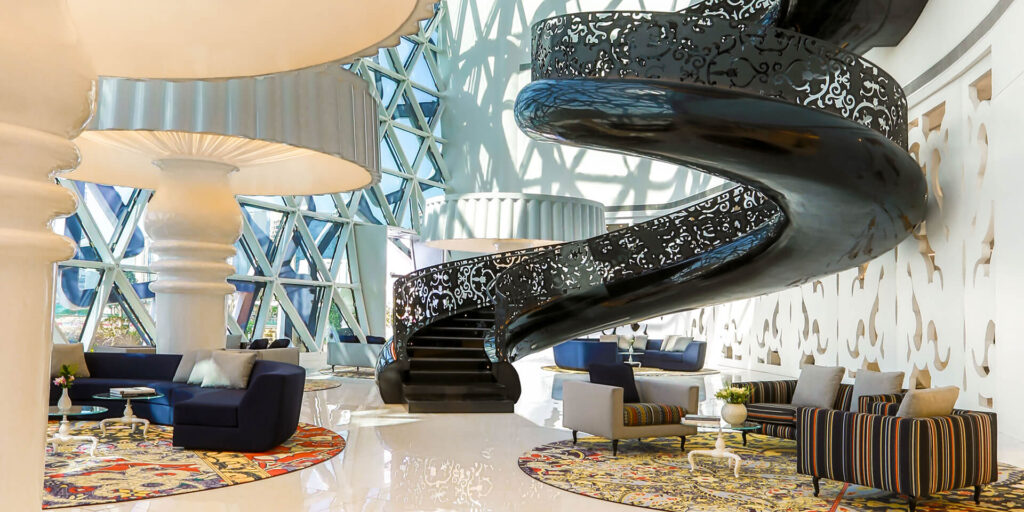Marcel Wanders is a name that has become synonymous with innovation and creativity in the design world. With his unique style and boundary-pushing projects, Wanders has made a lasting impact on the industry. In this article, we will delve into the life and career of Marcel Wanders, exploring his journey to design stardom and examining his influence on contemporary design trends.
Summary
Marcel Wanders rose to design stardom through his unique and innovative approach to design.
Wanders’ Dutch roots heavily influenced his work during his Amsterdam years.
Wanders’ impact on the Italian design scene was significant, particularly during his time in Milan.
The Wanders Effect can be seen in contemporary design, with many designers drawing inspiration from his work.
Wanders’ legacy continues to inspire and influence designers around the world.
The Early Years: Marcel Wanders’ Journey to Design Stardom
Marcel Wanders was born in Boxtel, Netherlands, in 1963. From an early age, he showed a keen interest in art and design, which led him to pursue formal education in industrial design at the School of Arts Arnhem (now known as ArtEZ University of the Arts). It was during his time at university that he began to develop his distinctive style characterized by whimsical forms and intricate details.
After completing his studies, Wanders gained valuable experience working for several renowned design studios before establishing his own studio – “Wanders Wonders” – in 1995. This marked a turning point in his career as he started collaborating with leading brands such as Droog Design and Moooi.
One of Wanders’ breakthrough projects came early on when he designed the iconic Knotted Chair for Droog Design. This chair showcased not only his innovative use of materials but also demonstrated an ability to challenge traditional notions of form and function. The Knotted Chair quickly gained international recognition and solidified Wanders’ position as a rising star within the design community.
The Amsterdam Years: How Wanders’ Dutch Roots Influenced His Work
Amsterdam has long been regarded as a hub for creative expression, particularly within the realm of design. It was here that Marcel Wanders found himself immersed in an environment that nurtured artistic exploration while embracing Dutch heritage.
Wanders’ signature style draws inspiration from Dutch culture’s rich history while infusing it with a contemporary twist. His use of materials, such as Delft Blue ceramics and traditional lacework, pays homage to the country’s craftsmanship traditions. However, Wanders’ designs are far from traditional; they often feature unexpected elements and bold colors that challenge conventional design norms.
During his time in Amsterdam, Wanders worked on numerous notable projects that showcased his unique approach to design. One such project was the Andaz Amsterdam Prinsengracht hotel, where he transformed a former public library into a luxurious space filled with whimsical details and surprising elements. This project perfectly encapsulated Wanders’ ability to create immersive environments that transport guests into fantastical worlds.
The Milan Connection: Wanders’ Impact on the Italian Design Scene
In 2001, Marcel Wanders made a significant move to Milan – widely regarded as the epicenter of design excellence. This relocation marked an important milestone in his career as he sought to establish himself within the Italian design scene.
Milan provided Wanders with access to influential designers and brands who were at the forefront of innovation in furniture and product design. It was here that he collaborated with renowned Italian companies such as Alessi, Kartell, and Flos – further solidifying his position as an influential figure within the industry.
Wanders’ impact on Milan’s design scene was profound; he brought a fresh perspective by combining Dutch sensibilities with Italian craftsmanship. His designs often featured intricate patterns and ornate details reminiscent of Baroque art while maintaining a modern aesthetic.
The Wanders Effect: Exploring the Legacy of Marcel Wanders in Contemporary Design
Marcel Wanders’ influence extends far beyond his own body of work; it has permeated contemporary design trends and styles worldwide. His ability to seamlessly blend tradition with innovation has inspired countless designers who seek to push boundaries while honoring cultural heritage.
Wanders’ impact can be seen in various aspects of contemporary design, from furniture and lighting to interior spaces. Many designers have drawn inspiration from his use of unconventional materials and his ability to create immersive environments that tell a story.
Furthermore, Wanders’ influence can be seen in the rise of the “maximalist” design movement – characterized by bold colors, intricate patterns, and an abundance of decorative elements. This departure from minimalism reflects a shift towards embracing individuality and self-expression in design.
Marcel Wanders’ career has been nothing short of extraordinary. From his early breakthrough projects to his enduring impact on contemporary design trends, Wanders has left an indelible mark on the industry. His ability to seamlessly blend tradition with innovation has inspired countless designers worldwide.
As we reflect on Marcel Wanders’ legacy, it becomes clear that his work will continue to shape the future of design for years to come. His unique style and boundary-pushing projects have challenged conventional notions while celebrating cultural heritage. Marcel Wanders is undoubtedly a visionary whose contributions will forever be etched in the history of design.
